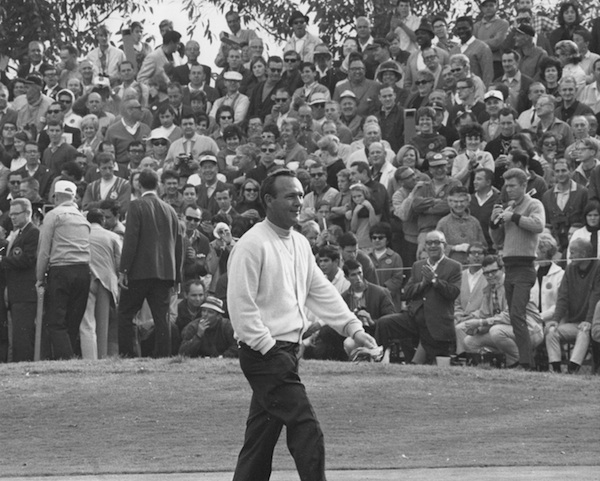by J.I.B. Jones
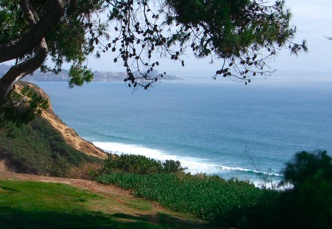
In mid-June 2008 I took the Pacific Surfliner train along the coast from Los Angeles to Rancho Santa Fe and thence to Torrey Pines for the 108th U.S. Open golf championship. I was a guest of the U.S.G.A. after having helped Pete Georgiady research for his article about public golf on the west coast in the official 2008 U.S. Open Program. Pete’s story opened with my story of baseball legend Babe Ruth signing his Yankee contract at Griffith Park’s original 18-hole Municipal Links in January 1920. Griffith Park later hosted the Los Angeles Open from 1937-1939 on both George C. Thomas Jr., designed courses. They were remodeled and toughened up in the 1930’s by Billy Bell and Bill Johnson with Works Progress Administration funding in anticipation.
Los Angeles’s other municipal gem is the Rancho golf course where the Open was also held from 1955-1972, and in 1983 when the Riviera Country Club held the P.G.A. championship. Rancho’s most memorable moment, as chosen by the editors, was Arnold Palmer’s 12 during the first round of the 1961 L.A. Open. Nevertheless, I’m more than pleased to have my name in print as the Rancho Park Golf Club historian. Thanks to everybody in the club for being a part of it, and to L.A.’s Recreation & Parks Golf Division for recommending me to Pete!
As I was lucky enough to be staying in Rancho Santa Fe with a great friend, I was able to take the volunteer shuttle from the polo grounds to Torrey Pines all week with no hassle. The U.S.G.A.’s organization was spectacular, and no matter what the armchair golf architects think about Torrey Pines’ value as a golf course, Riviera could never host a US Open without a second course for practice and staging and large crowds of spectators. Well, I guess they could if they closed Brentwood, and maybe Bel-Air, and filled them with tents, and shuttled people by helicopter like they do at Grand Prix races!
Unfortunately, the U.S.G.A. didn’t have time to do any historical research on Torrey Pines. In fact, in their display of future US Open venues — in the American Express tent — they wrongly credited Chandler Egan with changing the 18th at Pebble Beach into a par 5. We at Rancho, and Neal Hotelling (the official historian of Pebble Beach), know that it was LACC and Rancho’s own W. Herbert Fowler who made the changes in 1921, the same year he finished designing the original Rancho-Ambassador course, and the Los Angeles Country Club’s North and South courses.
As is my custom, I told everyone that I met about Torrey’s history, even though they were mostly interested in a certain golfer from Cypress, California…
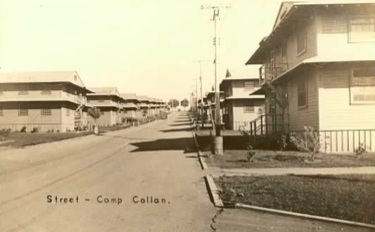
Camp Callan – Torrey Pines South during WW II
For the record, Torrey Pines was given to San Diego in 1908 by Ellen Scripps, the most amazing philanthropist California has ever known. Miss Scripps, along with her sister Virginia, bought every acre of Torrey Pines to stop development, and then donated it to the City of San Diego to be protected and used as a public park. During World War II it became Camp Callan, the Coast Artillery Corps base, then a Sports Car Club of America race track, and then finally the Torrey Pines golf courses.
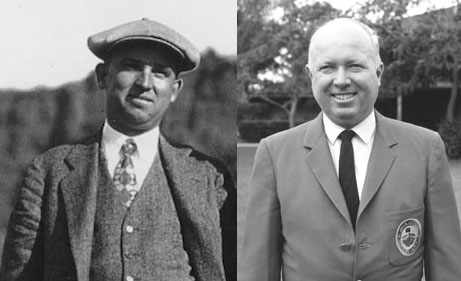
Billy Bell and his son Billy Jr.
William P. “Billy” Bell, who designed, co-designed, or constructed the majority of the great Southern California golden era golf courses before his untimely death from a heart attack in 1953, had the original vision for Torrey Pines. His equally prolific and brilliant son William F. Bell (Billy Jr.) made his father’s vision a reality by completing the designs in 1955 when he began construction of the golf courses.
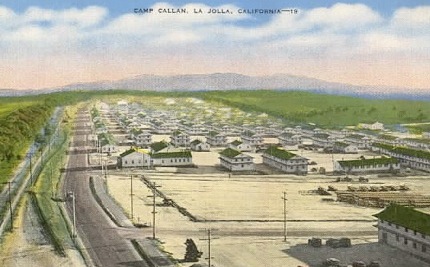
Camp Callan postcard – Torrey Pines South during WW II
Billy Jr. shaped the mostly flat landscape into the rolling land of the Torrey Pines we know today by using the many acres of asphalt roads, parade grounds, and even the foundations of the camp buildings, piling the rubble to shape the courses. Truly a pair of genius’ at work!
Torrey Pines South course opened in June 1957 with an exhibition that included 1934 Rancho golf course professional Ralph Guldahl, winner of the 1937-38 U.S. Open and the 1939 Masters.
In 1972 golf course architects David Rainville and Billy Casper did a major remodeling job which included recontouring the greens. More recently, Rees Jones improved the layout tenfold in preparation for the 2008 US Open. The local club golfers I met over the week were amazed at how beautiful Rees had made their golf course.
Maybe we can use Hillcrest for the extra tents and host the US Open in 2024 at Rancho Park!
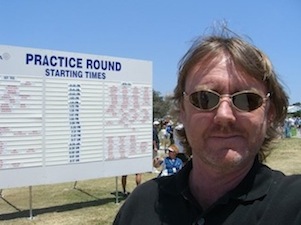
Jones during U.S. Open practice at Torrey Pines
Back to the 108th US Open.
The rough during the practice rounds was all anybody needed to see to know that hitting fairways was going to be the name of the game at this Open. Unlike the Masters, getting up and down wasn’t the hard part. Narrow fairways made it paramount to be in the fairway. Even the short rough made hitting the green unlikely and a bogey likely. Many players also seemed to be caught off guard by the fluffy sand traps and the slowness of the greens the first couple of days compared to expectations.
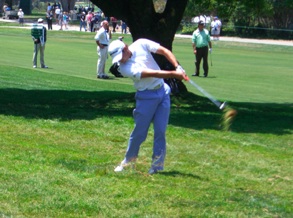
Sergio Garcia didn’t get this one (or the next 2) out of the second cut on 14 on Wednesday.
The U.S.G.A.’s scoring prediction was right on. They got what they wanted and the spectators and TV viewers were treated to some brilliant golf. Even the best drivers of the ball ended up in the rough and paid the price. How Tiger won while missing so many fairways says volumes about the quality of his short game and his superhuman strength from the rough. Even though we always go on about his awe-inspiring swing, he really is also as good as the best putter who has ever lived — and his ‘drive’ to win is unequalled.
There were many highlights of my week, including seeing former S.C.G.A. President Ed Holmes scouting the course for the TV announcers, and meeting up with legendary golf course supervisor Ted Horton (C.G.C.O.A.), Kevin Heaney (S.C.G.A.), Craig Kessler (P.L.G.A.) and U.S.G.A. President Jim Vernon and his assistant Ashleigh on the North Course, away from the action, for a photo shoot celebrating Golf Week in California.
The most impressive feat of the event, without a doubt, were the thousands of volunteers who came from all over America and across the world to work for their clubs and charities, helping to raise millions for their communities. It really is the pinnacle of dedication and charitable giving by the volunteers, and the U.S.G.A. should be praised for using their championships this way.
I was so lucky to have been a part of the 108th US Open. Thank’s Pete and Kevin! I did it wearing my Rancho Park logos in full view on the various shirts and visors I wore all week.
Next up for us in California – Pebble Beach 2010.
All photos and words Copyright 2008-2014 JIB Jones Golf Historical Society
Not to be reprinted without permission.

